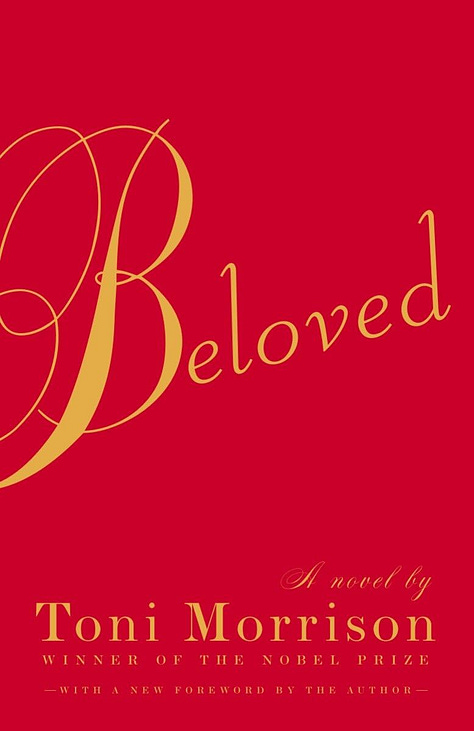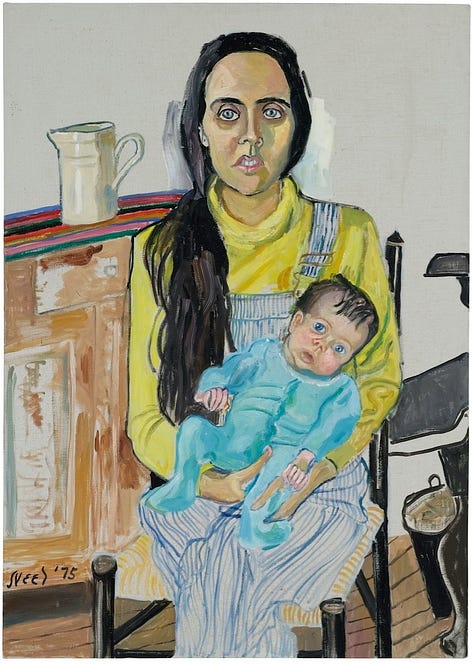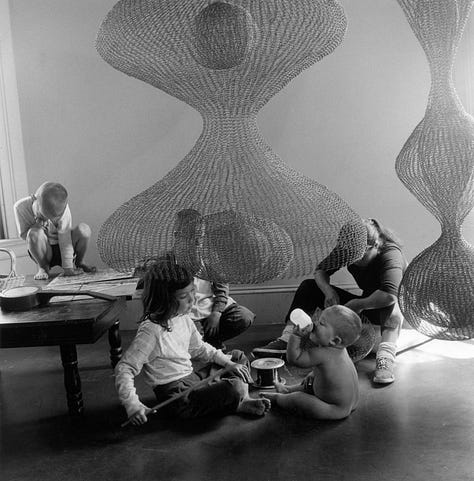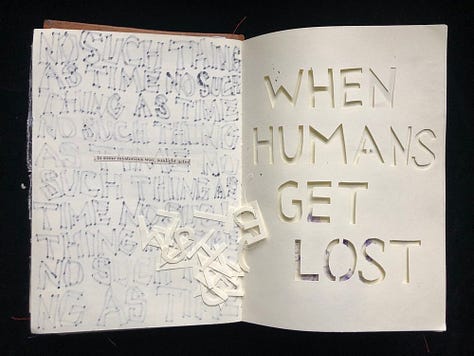January 2025//Archive #1
January thoughts and books read—I think the theme is time and time travel!
We made it to the end of January!
I wasn’t expecting this month to be as personally grueling as it was. My chronic pain and mental illness flared up, one pushing the other to increase by the day, egging each other on. I even started to experience new health problems and spent a lot of January feeling terrible, unable to work, and having CT scans and other invasive medical interactions. I’m closer to an understanding but also further away, so this year, I guess, is the year of figuring that out.
Some good things to come out of this month…I started a new writing workshop called Generative Writing, which focuses on the various shapes pleasure can take in our bodies, minds, and writing. It’s for six weeks, and every Saturday morning for three hours, we meet to read fiction, nonfiction, and poetry and work through five or more prompts. I’ve been producing poetry/flash nonfiction, things I never thought I would write, and I’m hoping to share those here sometime. It also snowed in South Texas!! Real snow, I wrote about it here.
Anyways...
Here is the first installment of my Archive 2025 project—you can read more about it here! I want to keep these relatively short with a small overview and review of the book, some media mentioned either artwork, other books, etc., and a quote synthesizing the book.
A Ghost in the Throat by Doireann Ní Ghríofa, I cheated a bit with this one as I read most of it in December and saved the last fifty pages for New Year’s Day. I wanted it to be the first novel of the year as it had themes I’m hoping to carry through 2025. This novel was intriguing because it was in the realm of autofiction, and I’m not just saying that because it is a “female text.” Listening to multiple podcasts with Ghríofa, she even says it is somewhat of a loose memoir. The narrator has four children and is enthralled with a poem she first read during her childhood, The Caoineadh, an Irish poem from the 18th century. As a young girl, she carries this poem like a talisman and clings to it throughout motherhood. As she nurses her children, she nurses herself on the poem—calling the work she does as a mother and the poem a “female text.” The book begins with the narrator's lists of chores, her daily tasks that anchor her days and make them full—she finds satisfaction in a completed chore even if she doesn’t cross everything off her “female text”. She finds her moments of joy with her children. The narrator is not bitter or resentful of her role as mother, the time it takes away from her time with the poem, or understanding more about its author, Eibhlín Dubh Ní Chonaill. I could write so much more about this novel. Still, it is ultimately about the connection between two women across time, who never meet but form a deeper connection through words and the oral tradition of storytelling, a tradition among women and their “female texts.” It’s about women’s lost and overlooked work through time. I love anything centering on motherhood, but by the end of the year, I felt a bit blah about them—I wanted something new, and this novel did it for me.
…the etymology of the word ‘text’ lies in the Latin verb ‘texere’: to weave, to fuse, to braid. The Caoineadh’s form belongs to a literary genre worked and woven by women, entwining strands of female voices that were carried in female bodies, a phenomenon that seems to me cause for wonder and admiration, rather than suspicion of authorship.
The Mother Artist by Catherine Ricketts was a short book on Mother Artists and other creatives. Once again, this book asks how motherhood and art-making work and how they are at odds in women's lives. Ricketts weaves together a personal narrative through her pregnancy and the early years of mothering and mothering through COVID-19, as well as how a community of care is required within art and the artistic community in mutual aid. I appreciated that most sections were interviews conducted by Ricketts with the artists, making you feel like you were part of the conversation or sitting with the artists in their studios. Ricketts has also focused on historically marginalized artists, which was refreshing, and her decision to group artists together in specific chapters created connections between artists and writers whose work I wouldn’t have realized were in conversation with one another, such as Marilynne Robinson, Leslie Jamison, and Becky Suss, or Ruth Asawa and Greta Gerwig. Chapters in the book range from labor, sex, advocacy, community, and perseverance, all through the lens of community, art-making, and motherhood.
Is motherhood a subject worthy of artistic exploration? If an artist who is a mother doesn’t explore motherhood directly in her work, does caregiving nevertheless change her vision of the world? How does that vision shape the art that she makes and how might that art shape those who encounter it.






On the Calculation of Volume 1 by Solvej Balle, translated from Danish by Barbara Haveland, is the first book in a series of seven volumes. So far, two have been translated into English by New Directions Publishing. I read this volume in a few sittings, making a year of days squeeze into a handful as I followed Tara Salter, a rare book dealer who is traveling to Paris for a conference and to acquire books for her and her husband Thomas’s business. On the morning of November 18th, she wakes to enjoy breakfast in her hotel, where she notices someone drop a piece of bread, something that happened the day before, kickstarting her realization that this is the second time she has experienced November 18th. A day she will continue to experience as she returns home to her husband earlier than either had planned. I won’t say much more because I am writing a more extended essay and review. But I haven’t stopped thinking about this book—it plays in a constant loop as I realize small moments of significance in an otherwise quiet novel where not much happens. I will say I think the first book is about more than just a time loop and has a lot to do with our current culture of loneliness, mental illness (depression), and, on a more personal reading, Obsessive Compulsive Disorder.
That strange moment when the ground under one’s feet falls away and all at once it feels as though all predictability can be suspended, as though an existential red alert had suddenly been triggered, a quiet state of panic which prompts neither flight nor cries for help and does not call for police, fire brigade, or ambulance. It is as if this emergency response mechanism is there on standby at the back of the mind, like an undertone not normally audible, but kicking in the moment one is confronted with the unpredictability of life, the knowledge that everything can change in an instant, that something which cannot happen and which we absolutely do not expect, is nonetheless a possibility.
On The Calculation of Volume 2 by Solvej Balle. I immediately picked up the second volume from my library and read it as quickly as possible. I don’t want to say much about this one since it is the second in a long series. I will say this is a sort of travelogue, an effort for Tara to create seasons and linearity for her endless November 18ths. Sorry, y’all…spoiler that isn’t a spoiler. She does not escape November 18th by the end of Volume 1, which maybe isn’t a spoiler, considering we have seven total novels in this series!
I want the seasons to be set right, for them to be dependable, for them to move with long, slow strides back into their proper order.
No One Gets to Fall Apart by Sarah Labrie is a memoir mainly set between the author's childhood in Houston, Texas, and her adult life in Los Angeles. The parts of this memoir that took place in Houston were so familiar—roads and places I have spent my entire life living on and around were fascinating to read and visit through another’s eyes and experiences. Houston plays a significant role in this memoir through a family history, specifically Labrie’s upbringing with her mother, who suffers from schizophrenia, and Labrie’s grandmother, who helped raise and put her through a private education after being a successful lawyer and business owner in Houston during the 1970s. Labrie focuses on the theme of branches, which continually run through the memoir, connecting her family tree, the novel she is trying to write, her relationship and race, and navigating a life waiting for mental illness to affect her while struggling with her own childhood alongside her depression. I appreciated the overall framework of Labrie’s fixation on her time travel novel, The Anatomy Book, heavily inspired by Walter Benjamin’s The Arcades Project, which she continually tries to get published. Before she realizes the book she is trying to write actually wants to be something else, it’s part of another story she needs to tell, which is this memoir. No One Gets to Fall Apart is about creating our own narrative without the fear of our past. Labrie is like a time traveler pulling the past through to her present. This is a short memoir at 200 pages, which sometimes made some parts feel a bit flat—only because I wanted to hold onto a moment with Labrie just a bit longer before moving on in the story, which is a completely personal preference. The length does keep the reader engaged and works well with Labrie’s style of writing.
What if you wrote about your mother?” Jill suggests. But I can’t I don’t know how. Like other people who spent too much time reading as children, I grew up thinking of myself as a person in a story, all plot twists and climaxes and reversals of fortune that remained under the purview of some distant narrative force into whose hands my life had been placed. I can’t find a logical thread in it for what is happening to my mother. Her illness is unfolding according to no rules at all, and no matter how I try to hold it together, the structure falls to pieces.
Wager a poetry collection by Adele Elise Williams, a PhD student in literature and creative writing at the University of Houston, with whom I was fortunate enough to take a two-hour free writing course at an art museum one Saturday morning, leading me to purchase her collection immediately. This collection is Southern Gothic meets a can of Pabst Blue Ribbon. Set against the backdrop of childhood tragedy in a neighborhood that casts itself as the main character, the constant violence of a place is threaded throughout each poem. A recovering addict who loves her mother, Williams utilizes a precise and often playfully macabre choice of words and phrases, causing her poetic style to fall in and out of lucidity as each poem takes shape in the humid southern heat, the smell of sweat and alcohol mingling with the delicate sweetness of childhood and magnolia blossoms, but always with the subtle rot of a place all too consuming. I look forward to reading more from Williams and taking another class with her one day.
A few lines from a favorite poem…
Covetous Ode
— 1994 and the summer and the magnolias erecting their buds like a fuck you fist — The water moccasins creep up wet gutters and concrete embankments, slinky secrets lying low in the golf course against Webb’s Creek —
— We ride our bikes with both hands and no hands until our calves shiver and our bottom parts ache — Live Oak roots blister the sidewalks — A rusty Nova in every carport — Men in beaters on the lawns —
— The honeysuckle so ripe no one smelled the rot —
— His brain a berry loosed from the pint, smushed, gross, undone — Me, obsessed with finding the most threatening thing, clutching the Zima bottle like a live snake, asking Missy to hold still—
Other Media I’ve Been Enjoying this Month
I have been rewatching Russian Doll and working on a review of On the Calculation of Volume. It's all connected!!
The second season of Severance has started—probably the show we most look forward to watching every week.
I’m also rewatching Normal People…again.
I can’t stop listening to the new Lucy Dacus single, “Ankles,” and watching the music video.
Also, a new single from Perfume Genius, “It’s a Mirror”. Another fantastic music video.
Lastly, please tell me about your month!
What did you read?
What are you watching?
What art are you looking at?
How are you feeling?
Anything you want to share?
Thank you for being here!









it’s been almost 3 years since i read a ghost in the throat and your reflections made me miss that book so much 🤍
I’m sorry your year has gotten off to a rough start - hope your health improves in February! I really enjoyed this list - especially your description of the mother artist! I’m not a mother yet but already concerns about how I will balance the two pop into my head all the time - going to have to give it a read!